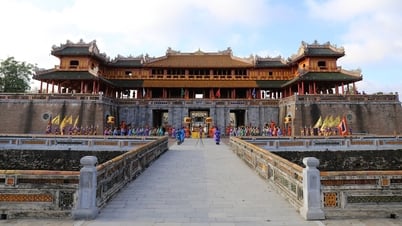The Internet of Things (IoT) is currently developing rapidly worldwide . According to research by market research firm Statista, by the end of 2020, there were an estimated 20 billion IoT devices globally, with an additional 127 devices connecting to the internet every second. The company estimates that the world will have 75 billion internet-connected devices by 2025.
This reality led the team of authors, including Huynh Quy Khang, Nguyen Dai Nghia, Tu Huu Duc, Duong Nhat Duy, and Duong Nhat Truong, to develop an open integrated platform called "Smart Garden Management Integration Model." "The novelty lies in the proposed solution for arranging and storing information from several types of sensors, with data stored according to the SensorThings (OGC Standard). The system optimizes the data transmission protocol between sensors and the mobile application under real-world conditions. It combines LoRa and Wifi data transmission protocols to optimize data transfer. The mobile software architecture combines reactive programming and imperative programming styles," shared Nguyen Dai Nghia, representing the team of authors.
Speaking about the SensorThings API (OGC Standard), Nguyen Dai Nghia explained that Sensing provides a standard for managing and retrieving environmental parameters and sensor information from IoT systems, while Tasking provides work plans for actuators. The OGC SensorThings API offers benefits such as: enabling the creation of new, high-value services with lower development costs and wider reach; reducing risks, time, and costs throughout the IoT product design cycle; and simplifying connections between devices and devices.
Regarding LoRa and WiFi wireless sensor networks, WiFi (Wireless Fidelity) is a family of wireless network protocols, based on the IEEE 802.11 standard, commonly used to connect local area networks of devices and access the Internet, allowing nearby digital devices to exchange data via radio waves. However, this technology has disadvantages such as high power consumption, a maximum coverage range of only 100m, and bandwidth slowdown when many devices are connected. LoRa stands for long-range. This is an RF modulated technology for low-power wide-area networks (LPWAN). Its advantage is its ability to transmit data up to about 5km in urban areas and 10-15km in rural areas. However, it has low data transmission capacity and cannot directly access the internet.
The combined use of LoRa and WiFi technology aims to leverage the advantages and overcome the disadvantages of both technologies, creating a communication system with the following characteristics: Wide coverage area.
Through mobile applications, the goal is to build a comprehensive IoT system. The hardware system utilizes integrated sensors of various types. In particular, it promotes the development of mobile application platforms and IoT technology in agriculture in the 4.0 era; helping users manage their gardens scientifically and achieve higher economic efficiency.
The paper "Proposed Integrated Smart Garden Management Model Based on Sensorthings API and LoRa Technology" by a team from Can Tho University was recognized as one of the four best papers at the 2nd Global Young Vietnamese Scientists Conference. It is known that within just six months of its launch, the conference attracted the attention of numerous students, young lecturers, and researchers from 16 provinces and cities and 5 countries worldwide, with 431 papers submitted (an increase of over 100 papers compared to the first conference). Of these, 109 papers were in the fields of economics and finance; 230 in social sciences and humanities; and 92 in engineering.
Source







































































































Comment (0)